CVTE
Metal Fabrication & Joining
Guy Shepherd, Academy C Administrator – Ext. 113
Course & Program of Studies
Statement of Purpose
The Metal Fabrication and Joining program offers a solid foundation in metalworking skills, preparing students for a variety of career paths. Key aspects of the program include:
- Metal Fabrication Processes: Learning various metalworking techniques, such as cutting, bending, forming, and welding.
- Welding Techniques: Mastering welding processes like oxy-fuel welding, shielded metal arc welding (SMAW), gas metal arc welding (GMAW), flux core arc welding (FCAW) and gas tungsten arc welding (GTAW).
- Print Reading: Interpreting blueprints and technical drawings to understand design specifications.
- Power equipment and tools: Utilizing equipment such as shears, saws, presses, brakes, drill presses to cut and shape metal components.
- Safety Practices: Prioritizing safety in the shop environment, including proper use of personal protective equipment (PPE) and adherence to safety regulations such as OSHA and the Hot Works Program.
- Industry Standards: Understanding national industry standards and quality control measures.
By the end of the program, students will be well-prepared to enter the workforce as skilled metalworkers, capable of working in a variety of industries, including manufacturing, heavy construction, marine, wind energy, aerospace, and medical fabrication.
Exploratory Program
The Freshman Metal Fabrication Exploratory program provides an introduction to the world of metalworking. Students will gain hands-on experience with basic metalworking techniques, including:
- Safety: Understanding and practicing safety procedures in the metalworking shop.
- Tool Usage: Learning to use hand tools and power tools safely and effectively.
- Metal Cutting: Cutting metal using various techniques, such as power saws and hand shears.
- Metal Shaping: Forming and bending metal using techniques like hammering, brake forming, and rolling.
- Joining Techniques: Exploring basic joining techniques, including Oxy-fuel welding and brazing, soldering and exposure to Gas Metal Arc Welding.
- Metal Finishing: Understanding the importance of finishing metal surfaces to improve appearance, safety and durability.
By the end of the exploratory program, students will have a solid foundation in metalworking and be prepared to advance to more complex projects as they are permanently placed into the metal fabrication program.
Freshman Program
The Freshman Metal Fabrication program provides a strong foundation in the fundamentals of metalworking. Key areas of focus include:
- Safety: Prioritizing safety in the shop environment, including the proper use of personal protective equipment (PPE) and understanding safety regulations.
- Tool Usage: Learning to use hand tools and power tools safely and effectively.
- Metalworking Basics: Acquiring skills in cutting, forming, and joining metals.
- Blueprint Reading: Interpreting prints and technical drawings to understand fabrication operations and design specifications.
- Shop Math: Applying basic math concepts to metalworking calculations.
- Career Exploration: Investigating various career paths within the metalworking industry.
Through hands-on projects, students will develop practical skills and a strong work ethic. They will also learn the importance of precision, accuracy, and attention to detail in metalworking.
Sophomore Program
The Sophomore Metal Fabrication and Joining Technologies course builds upon the foundational skills acquired in the freshman year. Key areas of focus include:
- Metalworking Techniques: Advancing skills in metalworking techniques, such as welding, cutting, bending, and forming.
- Print Reading and Interpretation: Reading and interpreting sketches, basic prints and technical drawings.
- Welding Processes: Gaining proficiency in various welding processes, including shielded metal arc welding (SMAW), gas metal arc welding (GMAW), and gas tungsten arc welding (GTAW).
- Power equipment and tools: Utilizing equipment such as shears, saws, presses, brakes, drill presses to cut and shape metal components.
- Quality Control: Understanding quality control measures and inspection techniques.
- Safety Practices: Prioritizing safety in the shop environment, including proper use of personal protective equipment (PPE) and adherence to safety regulations such as OSHA and the Hot Works Program.
By the end of the sophomore year, students will have a strong foundation in metal fabrication and joining, as well as 3 welding processes, enabling them to tackle more complex projects in their junior and senior years.
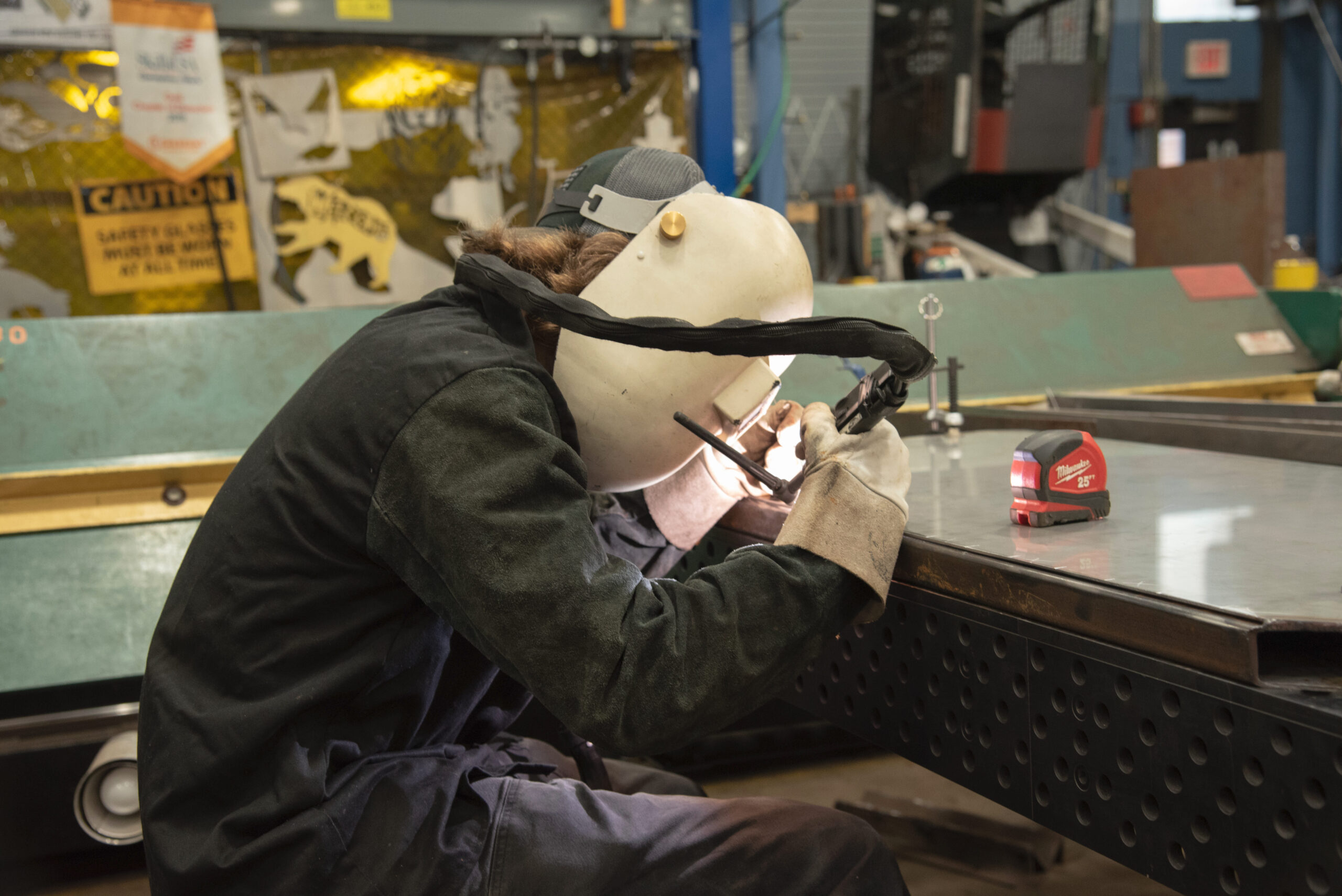
Sophomore Related Class 1
Introduction to Welding Theory and Trade Math
The Sophomore Metal Fabrication theory course delves deeper into the technical aspects of metal fabrication. Key topics include:
- Materials Science: Understanding the properties of various metals and alloys, including their strengths, weaknesses, and applications.
- Metal Forming Processes: Exploring techniques like bending, forming, and stamping to shape metal into desired configurations.
- Welding Techniques: Mastering advanced welding techniques, such as TIG, MIG, and oxy-fuel welding.
- Machining Processes: Utilizing machine tools like saws and press brakes, and drill presses to create precise metal components.
- Basic Blueprint Reading and Interpretation: Reading and interpreting complex blueprints and technical drawings.
- Quality Control: Implementing quality control measures to ensure the accuracy and precision of fabricated parts.
- Computer-Aided Design (CAD): Using CAD software to design and model metal components.
- Computer-Aided Manufacturing (CAM): Programming CNC machines to automate the metal fabrication processes.
By the end of the sophomore year, students will have a strong foundation in metal fabrication and be well-prepared for advanced coursework and industry certifications.
Sophomore Related Class 2
Metal Fabrication and Joining Tools and Technology Uses
The Sophomore Metal Fabrication theory course provides students with advanced skills and knowledge in metal fabrication and joining. Key areas of focus include:
- Advanced Welding Techniques: Mastering advanced welding techniques, including TIG, MIG, and oxy-fuel welding.
- Metal Forming: Exploring various metal forming techniques, such as bending, rolling, and forging.
- CAD/CAM Integration: Using CAD/CAM software to design and manufacture complex metal parts.
- Quality Control and Inspection: Implementing quality control measures to ensure product quality and adherence to industry standards.
- Project Management: Managing fabrication projects, including scheduling, budgeting, and resource allocation.
Through hands-on projects and real-world applications, students will develop the skills and knowledge needed to excel in the metalworking industry.
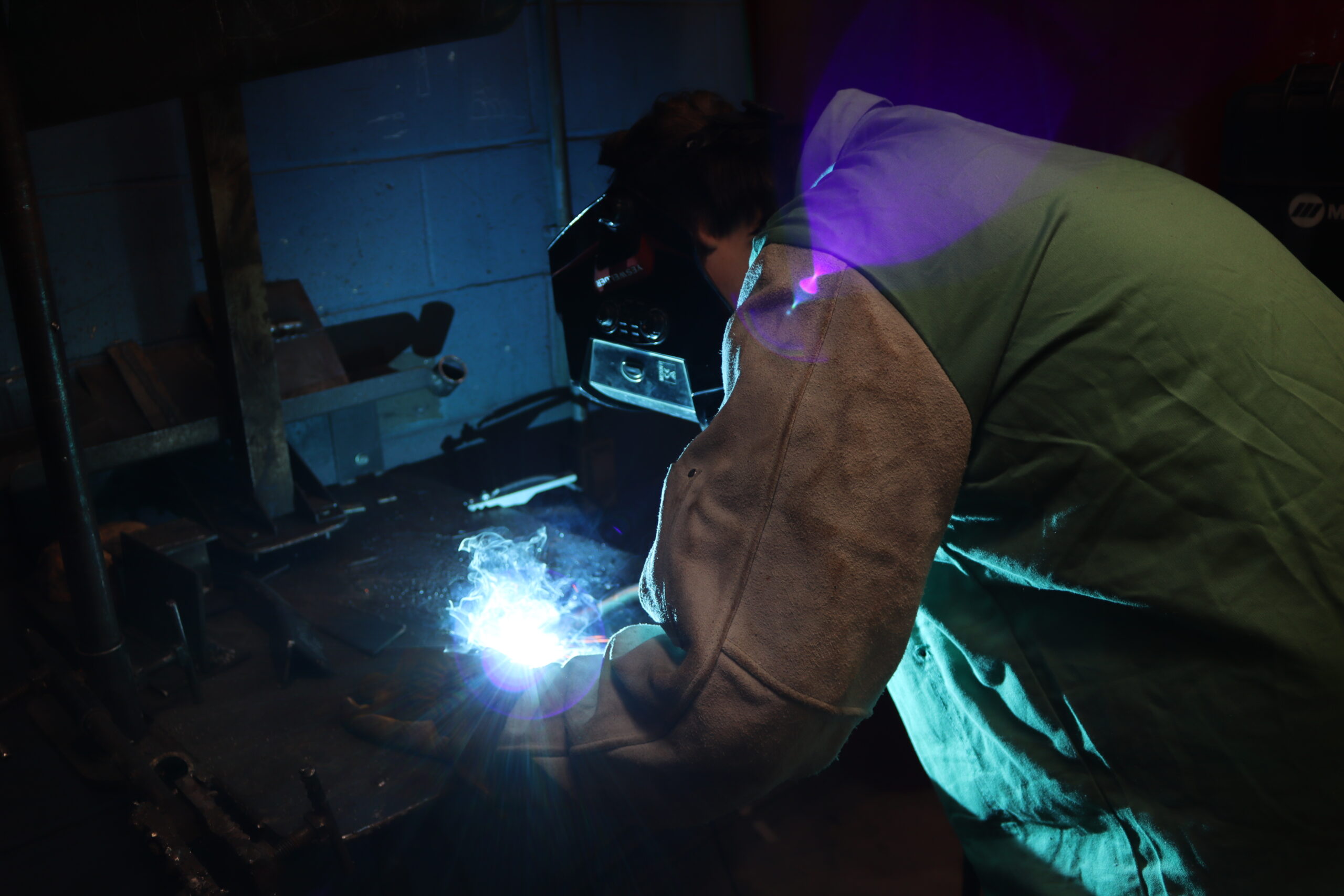
Junior Program
The Junior Metal Fabrication and Joining Technologies course provides a comprehensive understanding of metal fabrication techniques and the application of industry-standard equipment. Key areas of focus include:
- Print Reading and Interpretation: Effectively interpreting design prints and technical drawings to understand design specifications.
- Layout and Fabrication Techniques: Applying layout techniques, such as parallel line, radial line, and triangulation, to accurately mark and cut metal components.
- Welding Processes: Mastering various welding processes, including SMAW, FCAW, GMAW, and GTAW, to join steel aluminum metal components securely.
- Cutting Techniques: Utilizing Air-Arc, oxy-fuel cutting and plasma arc cutting to cut metal materials to precise dimensions.
- CNC Machining: Operating CNC press brakes and CNC plasma cutting machines to automate fabrication processes.
- Quality Control: Ensuring the quality and accuracy of fabricated components through inspection and testing.
By the end of the junior year, students will be well-prepared to tackle complex fabrication projects and demonstrate proficiency in a variety of metalworking techniques. They will be ready to apply their skills in real-world settings, such as sheet metal manufacturing, heavy construction, marine construction and maintenance, wind energy, aerospace, and medical fabrication.
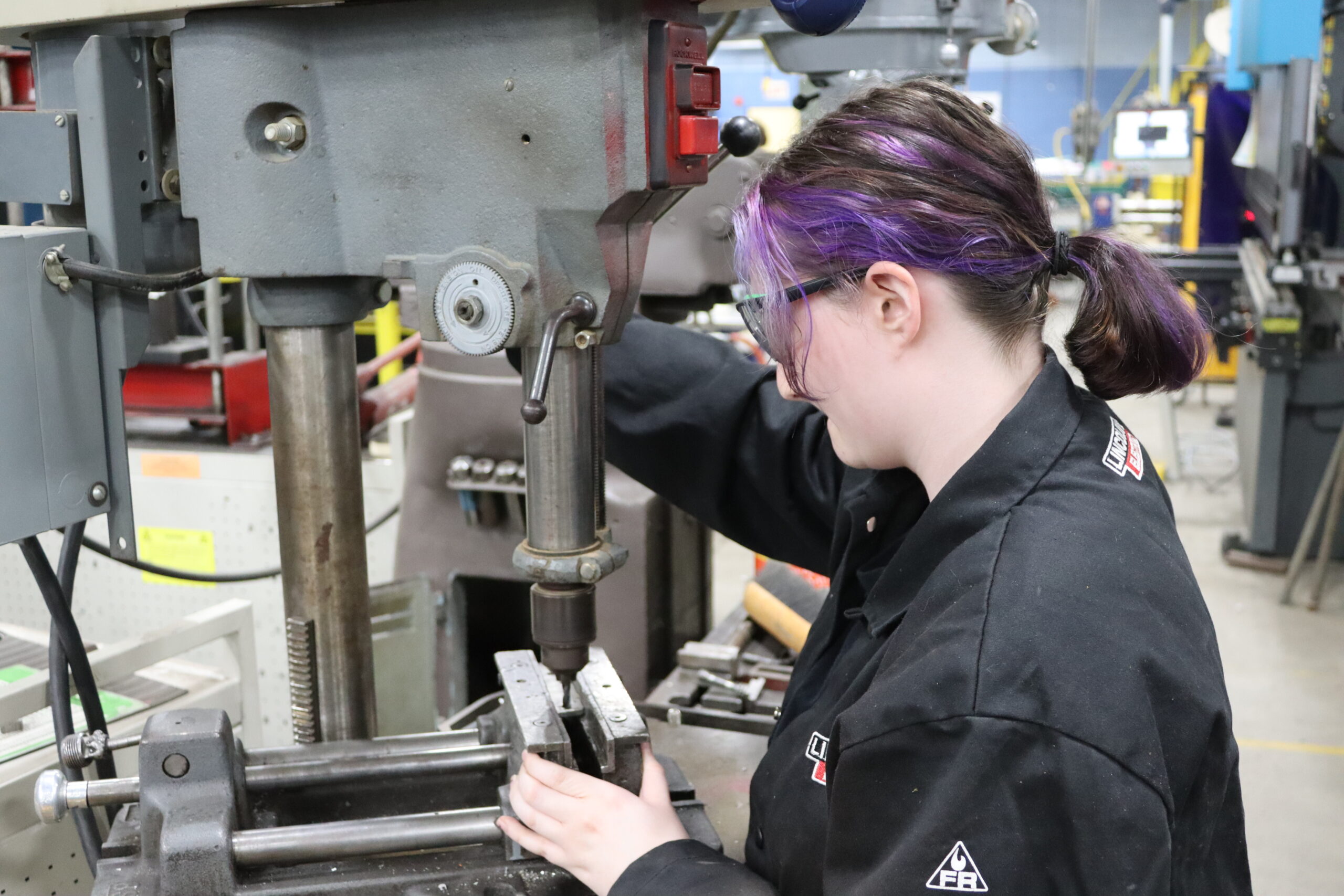
Junior Related 1
Metal Fabrication and Joining Technologies
The Junior Metal Fabrication and Joining course builds upon the foundational knowledge and skills acquired in previous years. Key areas of focus include:
- Advanced Welding Techniques: Mastering advanced welding techniques, including welding specific metals and alloys.
- Welding Inspection and Testing: Understanding welding inspection techniques, such as visual inspection, radiographic testing, and magnetic particle testing.
- Fabrication Project Management: Planning, scheduling, and managing complex fabrication projects.
- Computer-Aided Design and Manufacturing (CAD/CAM): Utilizing CAD/CAM software to design and program CNC machines for precise fabrication.
- Quality Control: Implementing quality control measures to ensure the accuracy and precision of fabricated components.
- Industry Standards and Codes: Adhering to industry standards and codes of practice.
Through a combination of classroom instruction and hands-on experience, students will develop the skills and knowledge necessary to excel in the metal fabrication industry.
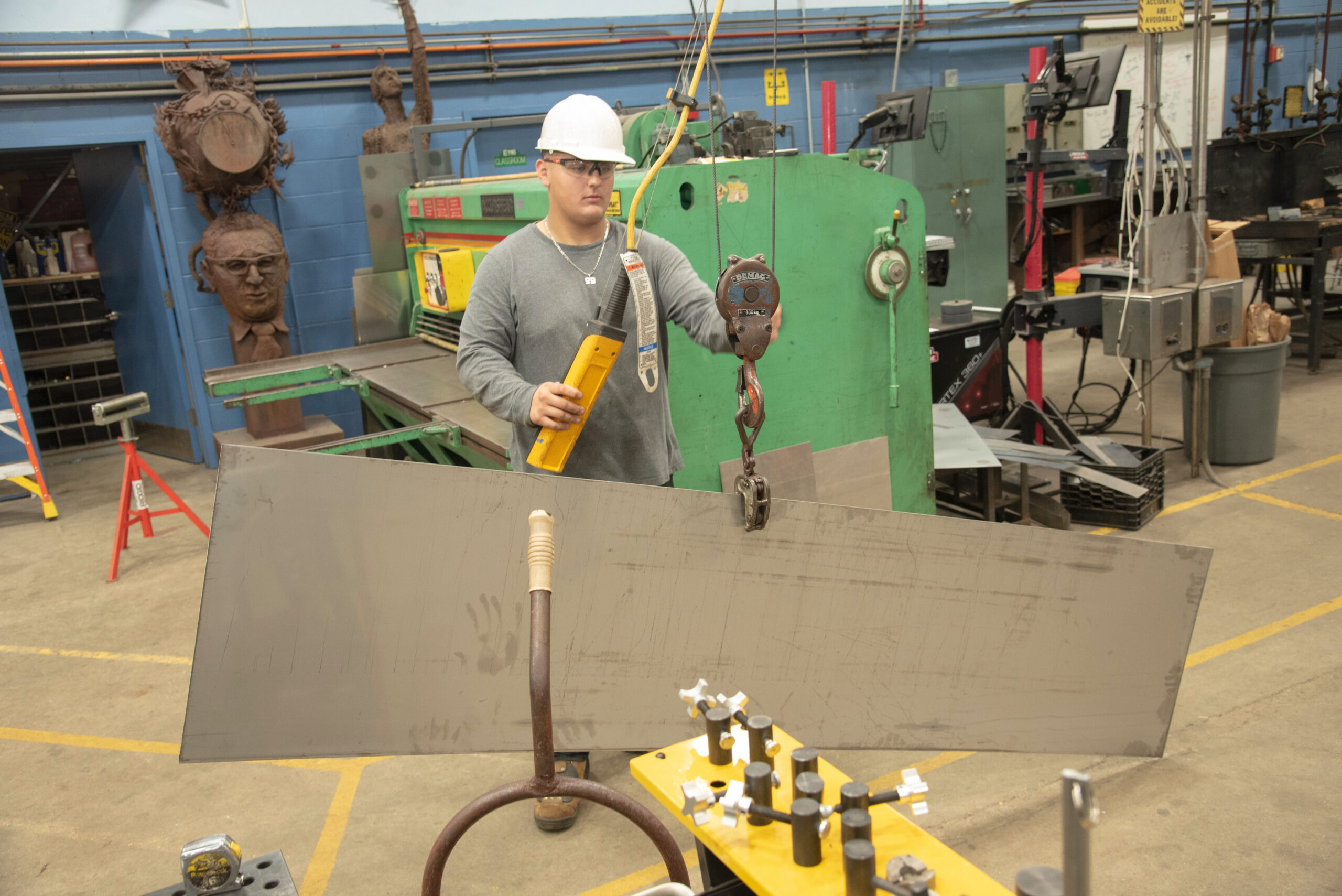
Junior Related 2
Technical Math / Technical Layout
This course provides a comprehensive understanding of the mathematical principles and layout techniques essential for metal fabrication. Key topics include:
- Basic Mathematics: Review of fundamental mathematical operations, including arithmetic, algebra, and geometry.
- Measurement Systems: Understanding different units of measurement (e.g., inches, millimeters) and converting between them.
- Geometric Principles: Applying geometric concepts, such as angles, triangles, and circles, to solve metalworking problems.
- Trigonometry: Using trigonometric functions to calculate angles, distances, and dimensions.
- Print Reading and Interpretation: Reading and interpreting technical drawings, including orthographic and isometric views.
- Layout Techniques: Developing layout skills, such as parallel line, radial line, and triangulation layouts.
- Tolerance and Precision: Understanding the importance of precision and tolerance in metal fabrication.
- Problem-Solving and Critical Thinking: Applying mathematical and technical skills to solve real-world metalworking problems.
By the end of the course, students will be able to:
- Apply mathematical principles to metal fabrication calculations.
- Read and interpret sketches, Prints and code terminology accurately.
- Develop precise layouts for metal components.
- Solve complex metalworking problems.
- Use measuring tools effectively.
- Understand the importance of precision and accuracy in metal fabrication.
Senior Program
The Senior Metal Fabrication and Joining Technologies course provides students with advanced skills and knowledge to prepare them for careers in the metal fabrication industry. Key areas of focus include:
- Advanced Welding Techniques: Mastering advanced welding techniques, including welding carbon steels, stainless, aluminum and alloys.
- Welding Inspection and Testing: Understanding welding inspection techniques, such as visual inspection, dye penetrant, radiographic testing, and magnetic particle testing.
- Fabrication Project Management: Planning, scheduling, and managing their time throughout live fabrication projects.
- Computer-Aided Design and Manufacturing (CAD/CAM): Utilizing CAD/CAM software to design and program CNC cutting and forming machines for precise fabrication.
- Quality Control: Implementing quality control measures to ensure the accuracy and precision of fabricated components to the applicable standards.
- Industry Standards and Codes: Adhering to industry standards and codes.
Through a combination of classroom instruction and hands-on experience, students will develop the skills and knowledge necessary to excel in the metal fabrication industry. By the end of the senior year, students will be well-prepared to enter the workforce or pursue further education in engineering or manufacturing. They will have the skills and certifications to work in a variety of metal fabrication settings, including manufacturing plants, construction sites, sheet metal manufacturing, heavy construction, marine construction and maintenance, wind energy, aerospace, and medical component fabrication.
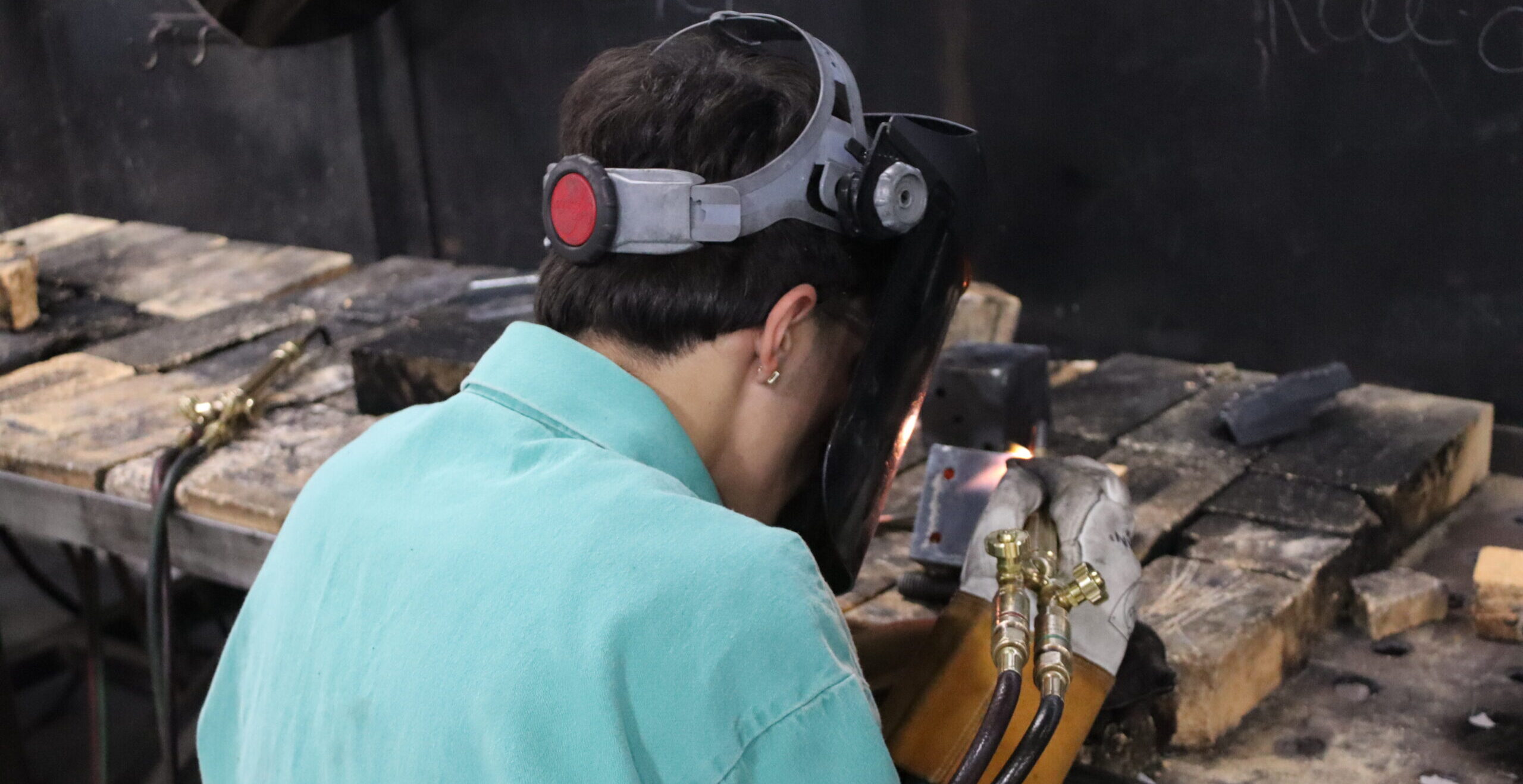
Senior Related 1
Advanced Welding Theory
This advanced course delves into the complexities of metal fabrication and joining, building upon the foundational knowledge and skills acquired in previous courses. Key areas of focus include:
- Advanced Materials Science: Exploring the properties of various metals and alloys, including their mechanical, physical, and chemical properties.
- Advanced Welding Techniques: Mastering advanced welding techniques, such as orbital welding and friction welding.
- Welding Inspection and Testing: Understanding various welding inspection techniques, including visual inspection, radiographic testing, and ultrasonic testing.
- Computer-Aided Design and Manufacturing (CAD/CAM): Utilizing advanced CAD/CAM software to design and program complex parts.
- Robotic Welding: Programming and operating robotic welding systems.
- Quality Control and Quality Assurance: Implementing quality control measures to ensure product quality and adherence to industry standards.
- Lean Manufacturing: Applying lean manufacturing principles to optimize production processes and reduce waste.
- Industry 4.0: Exploring the impact of Industry 4.0 technologies, such as the Internet of Things (IoT) and artificial intelligence, on metal fabrication.
By the end of this course, students will be well-prepared to enter the workforce as skilled metal fabricators and welders. They will possess the knowledge and skills to work in a variety of industries, including aerospace, automotive, and construction.
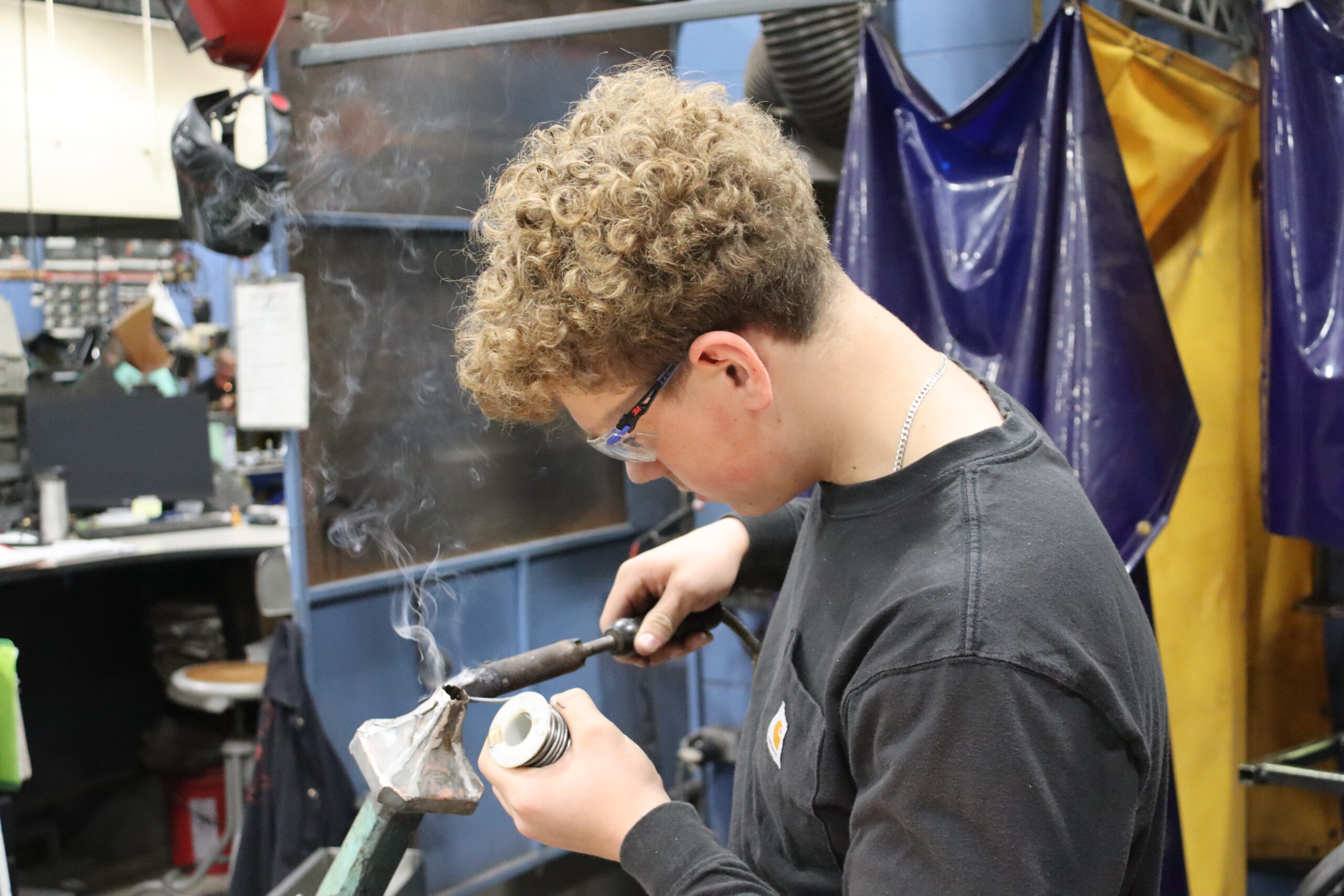
Senior Related 2
Job Estimation and Entrepreneurship – Elective
This course provides a comprehensive overview of the business aspects of metal fabrication. Key topics include:
- Job Estimating:
- Analyzing blueprints and specifications to determine project scope.
- Estimating labor, material, and overhead costs.
- Developing accurate project quotes.
- Business Planning:
- Creating a business plan, including executive summary, market analysis, financial projections, and operational plans.
- Identifying target markets and developing marketing strategies.
- Financial Management:
- Understanding financial statements, budgeting, and cost control.
- Managing cash flow and inventory.
- Legal and Regulatory Compliance: Adhering to safety regulations, labor laws, and environmental regulations.
- Customer Relations: Building strong relationships with clients and understanding customer needs.
- Professional Development: Developing strong communication, problem-solving, and leadership skills.
By the end of the course, students will be able to:
- Develop accurate job estimates.
- Create comprehensive business plans.
- Manage finances effectively.
- Build strong customer relationships.
- Navigate the legal and regulatory landscape of the metal fabrication industry.
- Successfully manage a metal fabrication business.
Certifications
- OSHA 10
- HotWorks
- AWS SENSE
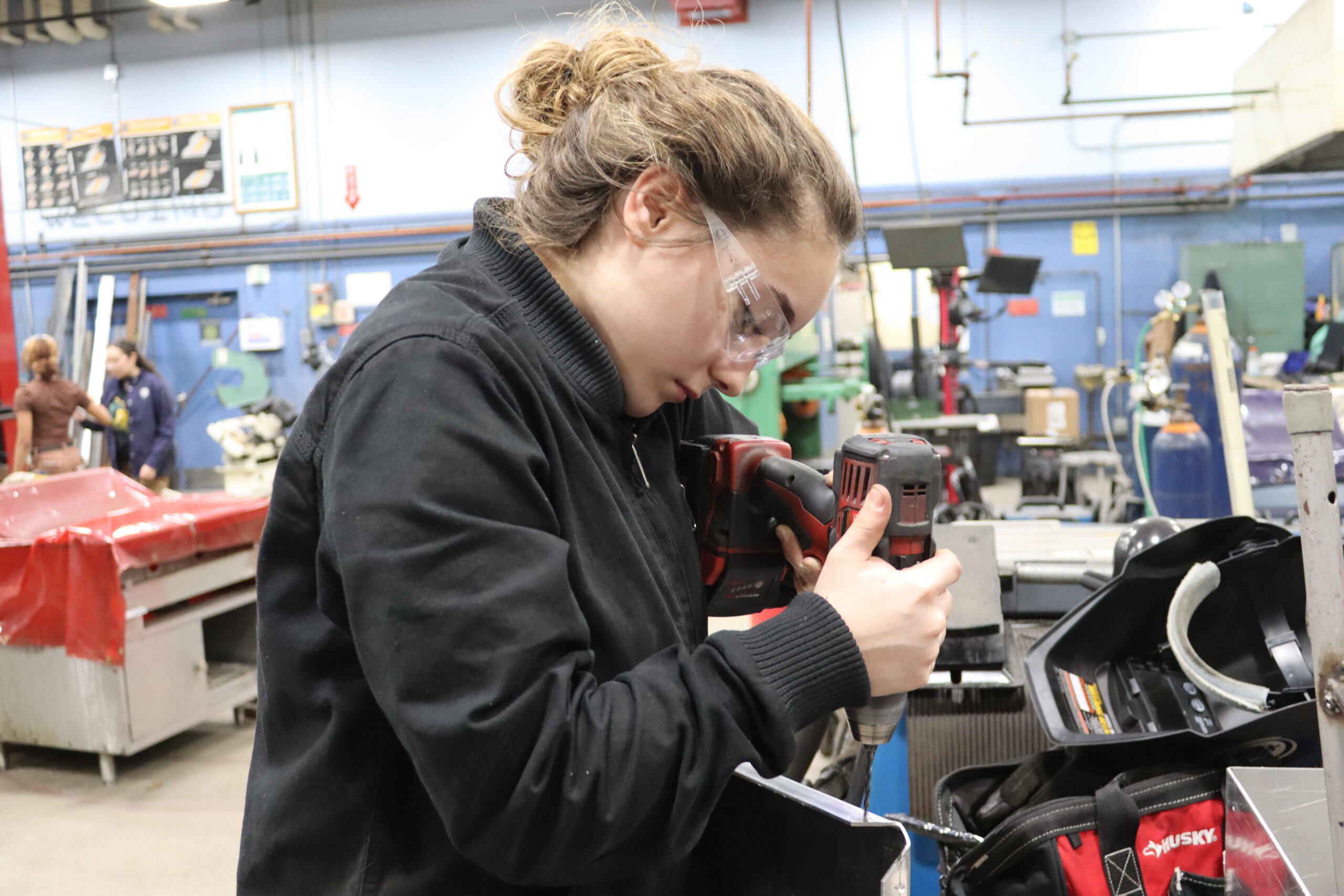
Career Opportunities
- Structural steel ironworker
- Boilermaker
- Sheet metal worker
- Mobile welding business owner
- Machine shop specialty welder
- Pipe fitter/welder
- Ornamental Ironworker/Blacksmith
- Metal shop welder/fabricator
- Automatic plasma machine operator
- Earth Moving and Heavy equipment repair welder
- Welding supply sales
- Metallurgist
- Mechanical and structural engineer
- Welding Inspector
- Metal artists
- Marine repair and welding
Post-Secondary Education
Upon completion of Metal Fabrication and Joining Technologies Program, students will be better prepared for post-secondary education in the follow courses of study:
- Formal metalworking apprenticeship programs such as; iron worker, pipefitter, sheet metal, marine and wind energy trades.
- Engineering degree programs; structural, mechanical, and metallurgical engineering.
- Armed forces construction metal working specialties schools.
- Art Colleges with concentrations in architectural metal designs, metal art construction and sculpture.


